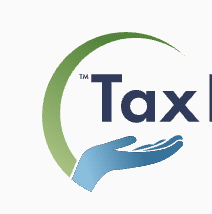
According to the latest IRS filing season statistics, the national average federal tax refund for 2025 is $2,939, up 2.4% from 2024's average of $2,869. Tax refunds vary dramatically across America, with some states averaging nearly $3,900 while others fall below $2,700, creating a difference of more than $1,200 between the highest and lowest states.
"The primary driver of this $1,200+ disparity isn't a difference in tax law, but in underlying economics and withholding behaviors," explains David Kindness, CPA and Founder of Your Creative CPA. "Higher-income states typically have higher average withholdings and a greater chance of higher tax refunds. For financial planning, a taxpayer should view a large refund not as a bonus, but as an interest-free loan to the government."
This guide breaks down average tax refund amounts by state, explains why these differences exist, and shows you how to optimize your own withholding and refund strategy.
Key Insights
- The national average federal tax refund for 2025 is $2,939, up 2.4% from 2024's average of $2,869.
- Florida has the highest average refund at $3,852, followed by Texas ($3,774) and Wyoming ($3,720).
- Maine has the lowest average refund at $2,656, with Wisconsin ($2,737) and Oregon ($2,772) also among the bottom five.
- High-refund states often have higher average incomes or no state income tax, leading to higher federal withholding.
- Your individual refund can differ significantly from your state's average based on your income, filing status, and tax situation.
Key Insights
The national average federal tax refund for 2025 is $2,939, up 2.4% from 2024's average of $2,869.
Florida has the highest average refund at $3,852, followed by Texas ($3,774) and Wyoming ($3,720).
Maine has the lowest average refund at $2,656, with Wisconsin ($2,737) and Oregon ($2,772) also among the bottom five.
High-refund states often have higher average incomes or no state income tax, leading to higher federal withholding.
Your individual refund can differ significantly from your state's average based on your income, filing status, and tax situation.
How Much Does the Average Refund Vary Across States?
The national average federal tax refund for 2025 is $2,939, up 2.4% from 2024. However, state averages range from $2,656 to $3,852—a spread of nearly $1,200 between the highest and lowest states.
Regional Patterns in Tax Refunds
Certain regions consistently show higher or lower refund averages:
Higher Refund Regions:
Southern States: Florida, Texas, and Louisiana all rank in the top 5.
No-Tax States: States without income tax (Texas, Florida, Nevada) often have higher federal refunds.
Mountain West: Wyoming shows exceptionally high refunds despite a smaller population.
"The correlation between income and refunds can be nuanced," explains Kindness. "Texas and Florida have median incomes near the national average, yet their refunds are among the highest. Without state taxes to calculate, employees often claim fewer W-4 allowances than necessary, leading to over-withholding."
Lower Refund Regions:
New England: Maine and Vermont show smaller refunds.
Upper Midwest: Wisconsin and Minnesota have lower averages.
Pacific Northwest: Oregon has among the lowest average refunds.
In contrast, states with higher taxes often see smaller refunds. "In high-tax states, payroll systems handle complex state and federal calculations together, creating more precise withholding," notes Kindness. He adds that the cost of living also affects refund amounts: "The Earned Income Tax Credit phases out at higher income levels, which are more common in expensive states, reducing average refunds there."
Top States With the Largest Tax Refunds
Here are the states with the highest average federal tax refunds based on the latest IRS Form 1040 statistics:
Rank | State | Average Refund |
1 | Florida | $3,852 |
2 | Texas | $3,774 |
3 | Wyoming | $3,720 |
4 | Nevada | $3,643 |
5 | Louisiana | $3,577 |
States With the Smallest Average Refunds
On the opposite end, these five states had the lowest average federal tax refunds:
Rank | State | Average Refund |
1 | Maine | $2,656 |
2 | Wisconsin | $2,737 |
3 | Oregon | $2,772 |
4 | Montana | $2,870 |
5 | Minnesota | $2,838 |
Complete State-by-State Breakdown
Here's the complete ranking of average federal tax refunds by state based on the latest IRS Form 1040 statistics:
Rank | State | Average Refund | Rank | State | Average Refund |
1 | Florida | $3,852 | 26 | North Dakota | $3,063 |
2 | Texas | $3,774 | 27 | North Carolina | $3,077 |
3 | Wyoming | $3,720 | 28 | Delaware | $3,048 |
4 | Nevada | $3,643 | 29 | Michigan | $3,047 |
5 | Louisiana | $3,577 | 30 | Idaho | $3,040 |
6 | Georgia | $3,574 | 31 | Indiana | $3,028 |
7 | Mississippi | $3,491 | 32 | South Carolina | $3,020 |
8 | Illinois | $3,394 | 33 | Hawaii | $3,011 |
9 | Connecticut | $3,362 | 34 | Pennsylvania | $3,011 |
10 | Alabama | $3,357 | 35 | South Dakota | $3,004 |
11 | California | $3,344 | 36 | Kansas | $3,000 |
12 | New York | $3,339 | 37 | Missouri | $2,991 |
13 | Massachusetts | $3,327 | 38 | Nebraska | $2,935 |
14 | New Jersey | $3,317 | 39 | Iowa | $2,924 |
15 | Washington | $3,310 | 40 | Kentucky | $2,922 |
16 | Maryland | $3,242 | 41 | New Mexico | $2,912 |
17 | Arkansas | $3,224 | 42 | Ohio | $2,874 |
18 | Virginia | $3,217 | 43 | Rhode Island | $2,871 |
19 | Oklahoma | $3,213 | 44 | Montana | $2,870 |
20 | Utah | $3,210 | 45 | Minnesota | $2,838 |
21 | Alaska | $3,206 | 46 | West Virginia | $2,834 |
22 | Tennessee | $3,192 | 47 | Vermont | $2,816 |
23 | Arizona | $3,179 | 48 | Oregon | $2,772 |
24 | Colorado | $3,142 | 49 | Wisconsin | $2,737 |
25 | New Hampshire | $3,091 | 50 | Maine | $2,656 |
Why Refunds Vary So Widely by State
Several key factors explain why some states see significantly higher tax refunds than others. Understanding these differences helps you better interpret your state's average and your own refund expectations.
Income Levels and Tax Withholding
Higher-earning states often see larger refunds because residents pay more in federal taxes throughout the year. When taxpayers have more withheld from their paychecks, they're more likely to receive substantial refunds.
States without income tax consistently show higher federal refunds due to several key factors:
Employee psychology: Without state withholding reducing their paychecks, workers often fear unexpected tax bills and claim fewer W-4 allowances than necessary, triggering maximum federal withholding.
Simplified payroll systems: Federal withholding is calculated in isolation rather than alongside state taxes, which frequently leads to over-withholding.
Lack of coordination: Unlike high-tax states, where payroll systems handle complex state and federal calculations together, no-tax states rely solely on federal W-4 forms for guidance.
"A single filer in Texas earning $75,000 might have their federal withholding calculated in isolation, which could easily lead to over-withholding," explains Kindness. "The same filer in New York might have their federal and state withholding calculated in tandem, often resulting in more precise withholding and a smaller refund."
State Tax Structures Impact Federal Refunds
States without income tax (like Texas, Florida, and Nevada) often show higher federal refunds. Without state income tax obligations, residents may have more federal tax withheld relative to their actual federal tax liability.
No State Income Tax States in Top Refunds:
Texas: #2 ($3,774)
Florida: #1 ($3,852)
Nevada: #4 ($3,643)
Conversely, states with robust tax systems and accurate withholding practices often see lower average refunds because residents pay closer attention to their actual tax liability throughout the year.
Federal Tax Credits and Deductions
State-specific factors can influence eligibility for federal tax credits:
Earned Income Tax Credit (EITC): Varies dramatically by state, with average amounts ranging from over $3,200 in states like Mississippi and South Carolina to under $2,500 in New Hampshire and Massachusetts, according to Kindness.
Child Tax Credit: Varies based on state demographics and family income levels.
Cost of living: Affects relative purchasing power and tax credit eligibility, as credits phase out at higher income levels more common in expensive states.
Despite different economic profiles, Wyoming ($3,720) and Mississippi ($3,491) both achieve high average refunds for distinct reasons. "Wyoming has a high median income, which results in larger over-withholding, while Mississippi has a lower median income but a high EITC usage rate of over 22%, which significantly inflates the average refund amount," explains Kindness.
Regional Economic Factors
According to Kindness, industry concentration significantly impacts withholding patterns across states:
Energy states: Texas and Louisiana see higher refunds because energy sector bonuses and overtime are withheld at the supplemental rate of 22%, often leading to over-withholding.
Tourism-heavy states: Florida's seasonal and part-time workforce frequently holds multiple jobs with fluctuating income, making accurate withholding difficult and increasing refunds.
Agricultural states: Iowa and similar states have many self-employed farmers who make estimated payments, which can lead to either overpayment or underpayment situations.
"State-specific industry concentration is a significant, yet often overlooked, driver of withholding patterns," notes Kindness.
How to Compare Your Own Refund
Your individual refund may differ significantly from your state's average. Here's how to evaluate your refund in context:
Factors That Affect Your Personal Refund
Income level: Higher incomes typically mean higher withholding and potentially larger refunds.
Filing status: Single, married filing jointly, or head of household status affects tax calculations.
Number of dependents: More dependents can increase refundable tax credits.
Withholding accuracy: How closely your paycheck withholding matches your actual tax liability.
When Your Refund Might Be Higher Than Average
You're likely to receive above-average refunds if you:
Have multiple jobs with inconsistent withholding.
Qualify for significant refundable tax credits (EITC, Additional Child Tax Credit).
Changed jobs during the year and had excess withholding.
Experienced major life changes that affected your tax situation.
When Your Refund Might Be Lower Than Average
Your refund may be below your state's average if you:
Accurately adjust your W-4 withholding throughout the year
Have significant self-employment income
Owe taxes from previous years
Take primarily non-refundable deductions and credits
Pro tip: "A refund or amount due that is less than 10% of your total tax liability generally indicates accurate withholding," advises Kindness. Large refunds aren't "smart"—they represent missed opportunities to invest, pay down debt, or build emergency savings throughout the year.
Ways to Optimize Your Refund Amount
Getting the "right" refund means balancing cash flow throughout the year with your year-end tax situation. Here are strategies to optimize your approach:
Adjust Your Withholding for Better Cash Flow
If you consistently receive large refunds, consider adjusting your W-4 to have less tax withheld from each paycheck:
Use the IRS W-4 calculator to determine optimal withholding.
Consider your cash flow needs: Large refunds mean you're giving the government an interest-free loan.
Account for major life changes: Marriage, divorce, new dependents, or job changes affect optimal withholding.
Maximize Eligible Tax Credits
Ensure you're claiming all credits you qualify for:
Earned Income Tax Credit (EITC): Available for lower-to-moderate income taxpayers.
Child Tax Credit: Up to $2,000 per qualifying child.
American Opportunity Tax Credit: For qualified education expenses.
Retirement Savings Contributions Credit: For IRA and 401(k) contributions.
How to Avoid Common Filing Mistakes
Tax filing errors delayed over 2.5 million refunds in 2024. The most common mistake—incorrect Social Security numbers—delays refunds by 4-6 weeks. Complex returns prepared at home have 20% higher error rates than those done professionally.
Simple steps to protect your refund:
Double-check Social Security numbers for all family members.
Verify bank account information for accurate direct deposit.
Meet deadlines for time-sensitive credits and deductions.
Keep organized records throughout the year for deductible expenses.
When to Get Professional Tax Help
You might benefit from professional tax help if you have:
Complex financial situations: Multiple income sources, business income, or investment transactions.
Major life changes: Marriage, divorce, or significant income shifts during the tax year.
High-stakes scenarios: Income over $150,000, stock options, or cryptocurrency transactions.
"Professional preparation becomes cost-effective when potential tax savings or risk mitigation exceed the preparation fee," advises Kindness. "If a $500 fee can identify $2,000 in overlooked deductions or prevent a $1,000 penalty, it makes financial sense."
Frequently Asked Questions
Which state has the highest average tax refund?
Florida has the highest average federal tax refund at $3,852, followed by Texas at $3,774 and Wyoming at $3,720. High-refund states often have no state income tax or higher average incomes, leading to higher federal withholding rates throughout the year.
Why is my state's average refund low?
States with lower average refunds often have more accurate withholding practices, different economic structures, or tax systems that result in residents paying closer to their actual federal tax liability throughout the year. This isn't necessarily negative—it means better cash flow during the year.
Has the national average refund changed in 2025?
The national average federal tax refund for 2025 is $2,939, up 2.4% from 2024's average of $2,869, according to IRS filing season statistics. This increase reflects various factors, including tax withholding adjustments and changes in taxpayer behavior patterns.
Can I adjust my withholding to reduce my refund?
Yes, you can adjust your federal tax withholding by submitting a new W-4 form to your employer. Use the IRS withholding calculator to determine the optimal amount based on your tax situation and cash flow preferences.
Do refund amounts vary significantly within states?
Refund amounts can vary significantly within a single state. Individual refunds depend more on income level, filing status, number of dependents, and tax credit eligibility than geographic location.
Should I aim for a large refund or small refund?
The optimal refund amount depends on your financial situation. Large refunds mean you're giving the government an interest-free loan, while small refunds or small amounts owed indicate more accurate withholding and better cash flow throughout the year.
Bottom Line: How Your State Affects Your Refund
While state averages provide useful context, your individual refund depends more on your income, withholding accuracy, and tax situation than your geographic location.
"It's important to use your state's refund data as a diagnostic tool rather than a goal," advises Kindness. "If your refund is consistently $1,000 higher than your state's average, it's a red flag that you may be withholding too much."
Conduct an annual tax check-up each fall before year-end. Project your income, review your withholding using the IRS calculator, and make necessary W-4 adjustments with your employer. This proactive approach helps you utilize refund statistics to improve your financial health and optimize cash flow throughout the year.
Methodology
Expert verification: All tax analysis and recommendations reviewed by David Kindness, CPA, and Founder of Your Creative CPA, for accuracy and practical applicability.
Tax data sources: State refund averages sourced from official IRS Statistics of Income data for tax years 2024 and 2025. All figures represent federal tax refunds only.
Industry statistics: Historical comparisons and inflation adjustments compiled from the Tax Foundation, Congressional Research Service, and IRS data on tax policy changes.
Verification process: All claims are cross-referenced with official government sources and industry analyses. Cost estimates represent typical outcomes and should be considered estimates rather than guarantees.


